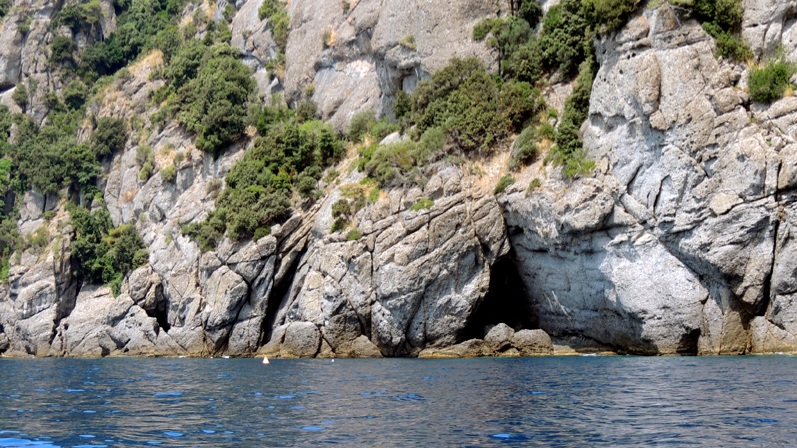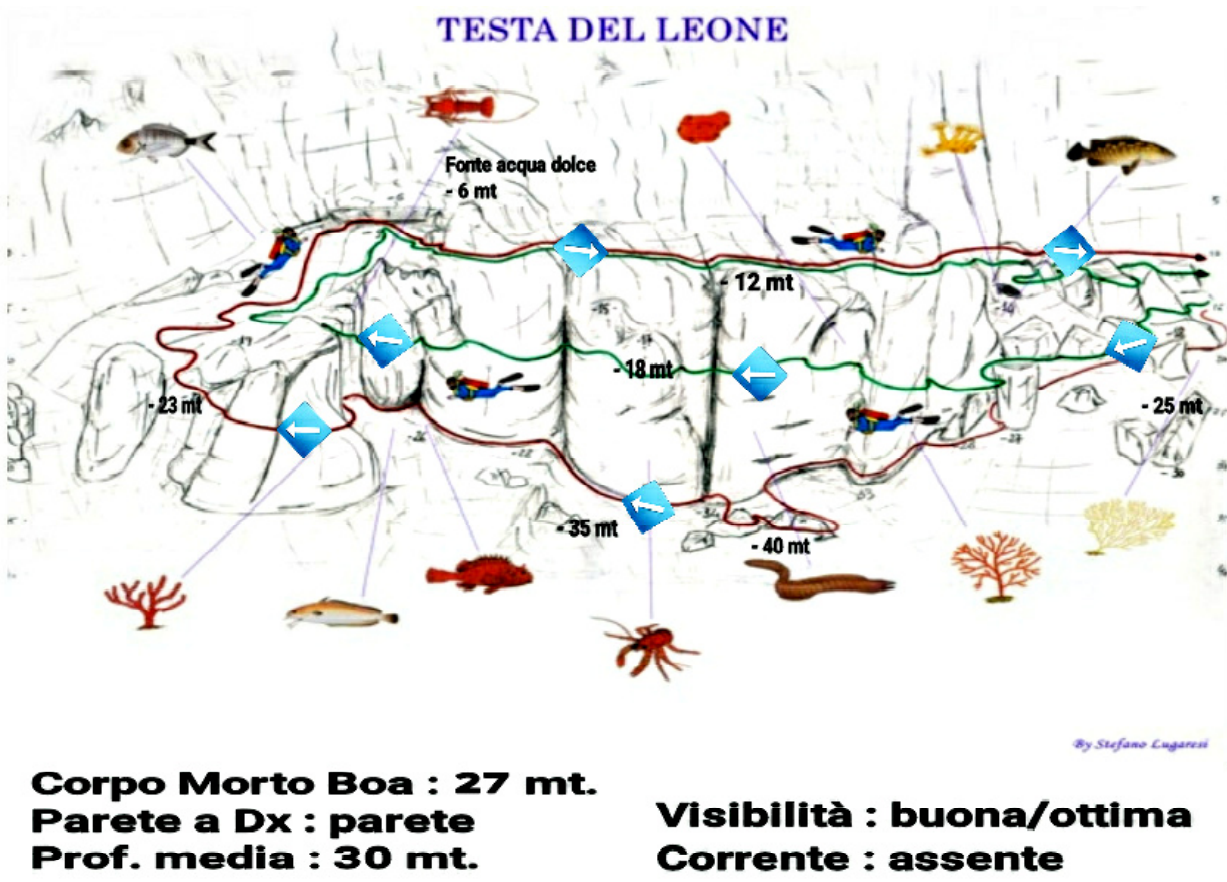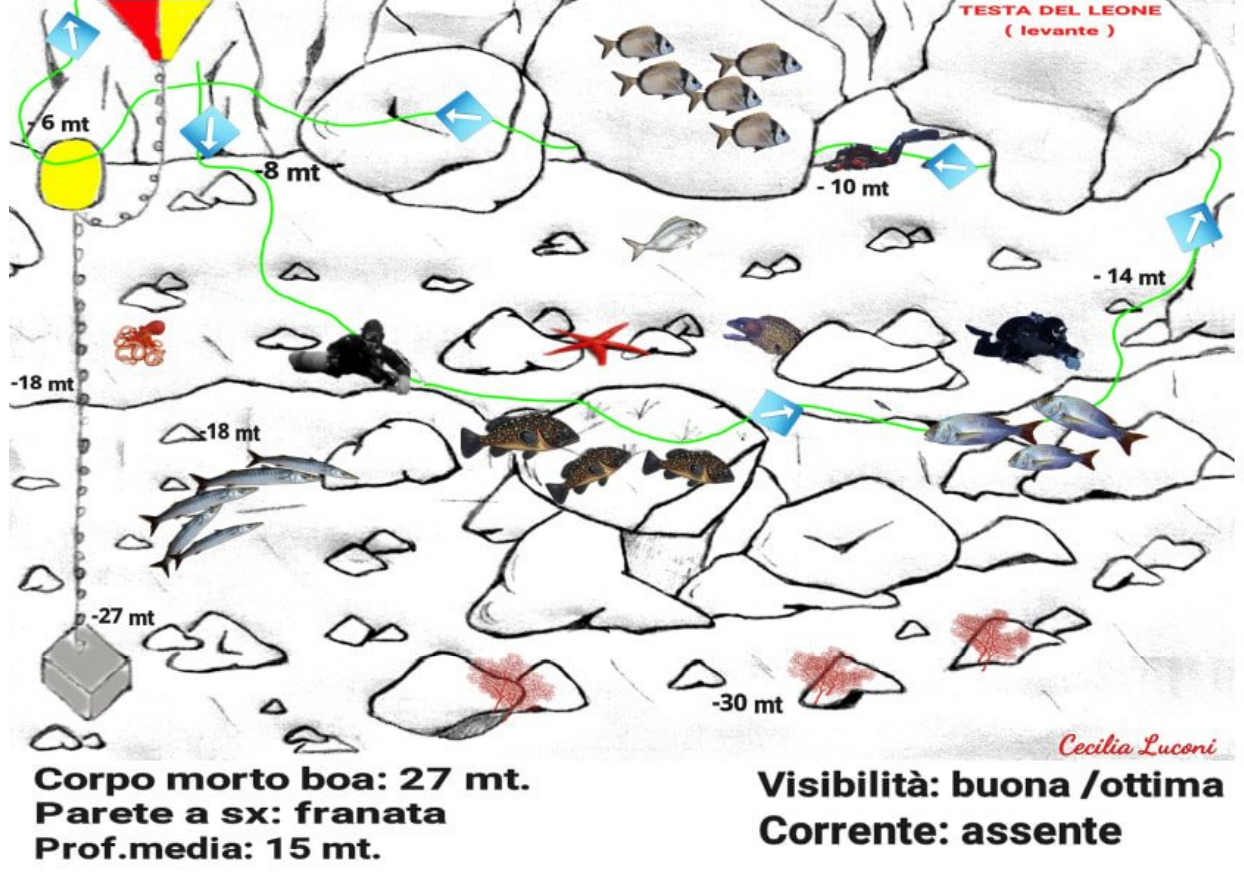Underwater landscape wall
Average depth 27 mt.
Visibility Good
Current no
Marine Environment gorgonians, red coral, madrepores
Marine Life groupers, snappers, lobsters, dogfish, conger eels, moray eels
Lion's Head
RED PATH (up to -40 meters)
After the pre-dive check we have 2 options: either go down near the mooring buoy until you reach the dead body at about -27 meters or on the wall taking a reference point at -6 meters for the return since the boat is moored slightly distant from the promontory. With the wall on our right we will fin towards SOUTH, first encountering a landslide with large boulders resting one on top of the other. We will illuminate the innumerable rifts
and ravines in search of lobsters, moray eels, mustelas and nudibranchs such as sea cows. A look into the blue given the frequent passage of predators such as barracudas, amberjacks, snappers, tuna. After reaching the depth of -40 meters we will begin to ascend until the wall ends, leaving room for a sand plateau at about -23 meters and in front of a solitary boulder. We will turn around, inverting the route with the wall to our left, going up in altitude until we reach the small and suggestive cave at -6 meters where there is a fresh water source that creates the halokline phenomenon with the salt water. We will resume finning at about – 6/7 meters until the large bay opens up on our left. We will continue to follow the course of the wall. If you have not gone down the wall and if the visibility is not exceptional, it is better not to venture out to look for the buoy but it will be wiser and safer to go out into the bay while keeping contact with the promontory.
GREEN PATH (up to -18 mt)
After the pre-dive check we have 2 options: either go down near the mooring buoy until you reach -18 meters and then detach or on the wall taking a reference point for the return at about -6 meters since the boat remains slightly distant from the promontory. I recommend the second option. With the wall on our right we will fin following the course of the promontory at the maximum altitude of -18 meters. We will be in the highest part of the wall that goes down to -40 meters. We will alternate our gaze towards the cracks and ravines with the blue where it is frequent the passage of hunting predators such as barracudas, snappers, amberjacks and tuna.
Arrived at the end of the long wall we will turn 180 ° having it now on our left and we will go up to -6 meters to visit the small and suggestive cave where there is a freshwater spring that creates the halokline phenomenon with the salt water. .
It is time to continue to return to the bay we started from. We will resume finning at about – 6/7 meters until the large bay opens up on our left. We will continue to follow the course of the wall until we find the reference point taken during the descent. If the visibility is not exceptional, it is better not to venture out to look for the buoy but it will be wiser and safer to go out into the bay while keeping contact with the promontory.
THE EAST SIDE (left wall) is instead characterized by a landslide.
This dive is very nice done high. Lots of fish and large boulders that protrude imposingly make the environment very suggestive.
Ideal for OPENs and also for those who want to see a new environment. It is an alternative dive site for those who want to try their hand at a different path. Sometimes it’s nice to change!
GREEN PATH (up to -18 mt)
We will descend to the wall where we will identify a reference point for the return at about -6 meters. After the pre-dive check we will be ready for a nice ride. Once at -8 meters we will continue to descend with the wall behind us towards SOUTH-EAST until we meet a large boulder at -18 meters where several groupers and snappers are stationed. We will continue to fin on the left wall between the rocks, illuminating the various ravines where we will be able to find moray eels and octopuses. After about 20 minutes or when we reach 100 bars we will go up, turning the wall to the right, up to -10 meters where gigantic boulders stretch forward await us. Under some you can pass because they are detached from the bottom. Nice and fun!
At this depth there is always a lot of fish: groupers, snappers, bream, corvine, shoals of salpe and damselfish, the pavonine damsels dancing frantically on their rock. A show!
Once we have reached our reference point taken earlier during the descent we will decide whether to go out there, after our 3 mn stop at -5 m, or to reach the buoy where the boat is moored if the visibility allows it.
Cecilia Luconi





